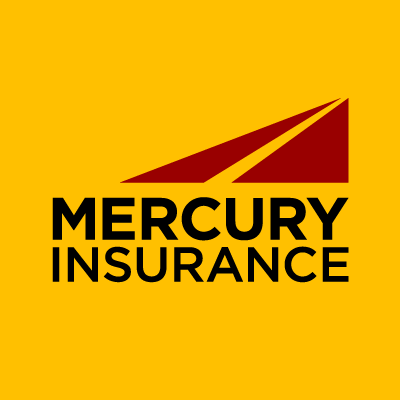Owning a car comes with its fair share of expenses such as gas, repairs, oil changes, and registration fees. Then there’s auto insurance, which can have various costs depending on your driving record, type of car, and other factors. If you’re unsatisfied with your current car insurance rate, here are eight ways that can help reduce your costs.
1. Multiple Cars and/or Drivers May Save Money
Whenever you go to your favorite grocery store, you’ll almost always get a better deal buying multiple loaves of bread as opposed to just one. The same logic applies to car insurance. Typically, you’ll end up with a higher quote to insure a single vehicle rather than insuring multiple cars and/or drivers. Why? Insurance companies want your business, so they’ll cut a deal to make sure you sign on the dotted line with them.
Generally, multiple drivers must live in the same household and be related by blood or marriage. If you have a teen driver, you can expect your insurance rate to increase since teenagers are a higher liability behind the wheel. However, you could receive a good student discount if your child performs well at school and has no blemishes on their driving record. Of course, you’ll need to show proof to your insurance agent to take advantage of this discount.
2. Don’t Get Into an Accident
It seems like an obvious tip, but it’s one that’s worth mentioning time and time again. Whether you get into a fender bender or serious car wreck, accidents have a direct impact on your car insurance rate. You may lose your insurance discounts, and your premiums will likely increase.
That’s why taking proper precautions is one of the best ways to get lower car insurance. Here are some things you can do to keep yourself and other drivers around you safe:
- Avoid texting and driving. Make sure to put on the “Do Not Disturb” feature whenever you're driving.
- Don’t eat while driving.
- Obey traffic laws and speed limits.
- Don’t drive under the influence of drugs or alcohol.
Backup cameras aren’t foolproof, either. While they’re great devices that help improve visibility and reduce backover accidents, backup cameras shouldn’t replace your senses. Be sure to check your surroundings with your eyes as well.
3. Use Mass Transit
If you live in a city where public transit is easily accessible, you may want to take advantage of that perk. It can reduce your insurance policy payment since you’re driving less frequently, which means you are lowering your risk of getting into a car accident. When you sign up for insurance, the company will usually ask how many miles you drive per year. This is one way an insurance company estimates and determines your premiums.
Reducing your driving not only helps reduce your car insurance but also your carbon footprint. According to the Center for Climate and Energy Solutions, switching to public transportation could lower your carbon footprint by 4,800 pounds annually.
Getting on a public bus or train isn’t your only option for limiting your time behind the wheel. Consider organizing a carpool with co-workers. Or, if your office is close enough, think about riding a bike to work.
4. Increase Your Deductible
A car insurance deductible is an out-of-pocket expense you agree to pay in the event of a claim before the insurance company helps cover additional expenses. Deductibles can range from $0 - $2,000, but $250, $500, and $1,000 are the most common deductible amounts. The general rule of thumb is the higher the deductible, the lower your corresponding coverage premium, and vice versa. So what’s the discount for increasing your car insurance deductible? According to the Insurance Information Institute, you could reduce your collision and comprehensive coverage cost by 40% or more if you were to raise your deductible to $1,000.
Before you decide to raise your car insurance deductible, make sure you have enough funds set aside so you can actually pay it in case of a collision or another incident. It’s already a stressful situation getting into an accident, so don’t add fuel to the fire by scrambling to pay your deductible.
Drivers save hundreds* when switching to Mercury Insurance.
*Individual savings may vary.
5. Choose Car Safety and Security Features
Choosing certain car safety and security features can be a great way to lower your car insurance rate. Many newer model cars will have the latest safety and security features already installed. But if your vehicle is older, you may want to consider adding some of these features so you can be safer behind the wheel and potentially reduce your car insurance rate:
- Anti-lock brakes — Since the 1990s, car manufacturers have made anti-lock brake systems (ABS) standard in their vehicles. Anti-lock brakes prevent your wheels from locking up so you can steer your car in an emergency.
- Anti-theft devices — Installing devices such as a passive alarm system or an ignition cut-off switch could help you get discounts on your car insurance rate.
- Tracking devices — If your car gets stolen, a premium tracking system such as OnStar or LoJack can help track down your vehicle, which means you can get a bigger discount than standard anti-theft devices.
6. Think About Insurance Before Buying Your Next Car
Have you been eyeing a large luxury SUV to bring home? Or perhaps you love smaller sports cars and recently found one up for sale online? Whatever vehicle is on your wishlist, make sure to review how much insurance costs before pulling the trigger on your new ride.
For one, size matters when it comes to insuring a vehicle. People driving smaller, sportier cars have a higher risk of getting involved in an accident, making the insurance more expensive. On the flip side, a large pickup truck can raise your liability premium cost, which is the coverage that helps pay the other driver’s repair and medical expenses if you’re at fault in an accident. The liability premium increases because larger cars inflict a greater amount of damage onto other vehicles.
Other factors can drive up your car insurance rate, too. High-end cars — especially foreign brands —have higher premiums because they usually cost more to repair and replace parts.. Additionally, cars with lots of horsepower cost more to insure because they are likely to drive at higher speeds, increasing the risk of an accident. If you want to know how to get lower car insurance, it’s best to stick with a modestly priced, medium-size car such as a sedan, minivan, or mid-size SUV.
7. Take a Defensive Driving Course
Many people only take a defensive driving course to dismiss a ticket, but some insurance companies offer discounts anywhere from 5% to 20% if you complete a defensive driving class on your own accord. However, not every driver qualifies for this type of discount. Some insurance companies limit these discounts to certain age groups, particularly seniors who may want to refresh and improve their skills behind the wheel. Some states don’t even allow these discounts at all. Be sure to talk to an insurance agent before signing up for a defensive driving course and see if you’re eligible for the discount.
8. Review Comprehensive Insurance
Comprehensive insurance is optional coverage that helps pay to repair or replace your car if it’s damaged from an incident other than a collision. These incidents can include fire, flooding, theft, vandalism, and falling objects such as hail or tree branches.
If you have comprehensive insurance and are looking for ways to reduce your car insurance rate, it’s worth reviewing your current coverage, especially if you have an older car. Keeping your comprehensive coverage may not be cost-effective if your vehicle is worth less than 10 times the premium. Auto dealers or banks can tell you the worth of your vehicle, or you can check Kelley’s Blue Book.
Conclusion
If you’re looking to save money on your car insurance, consider some of these tactics to help you get the insurance rate you want. If you'd like to get an online quote or speak with an agent, Mercury Insurance can help you select the insurance coverage that fits your budget and lifestyle.


